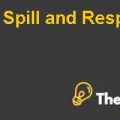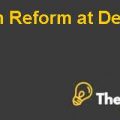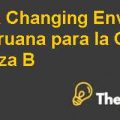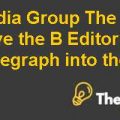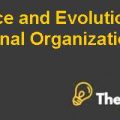
CASE CONTEXT
The CEO and owner of the company, Susan Griffin was planning to sell the company. The advisors of Griffin had estimated that the value of the company would be around $ 10 million. She was currently earning good income from the operations of her company. However, now she wanted to take relief from her responsibilities and base her all earnings over the investment income which she would make from the liquid assets that she would receive from the sale of the company. Susan would need enough income so that she meets all her day to day expenses and still maintains the same life style. Apart from this, she also wants to help her elderly mother and her two children by offering financial help to them. Therefore, she is now planning on how to invest and manage her portfolio and in what proportion the investment should be made into different options available.
INVESTMENT RETURN
Susan will need annual investment income of around $ 440,000 annually. This represents of around 4.4% return on an investment of $ 10 million. She is not an aggressive type of investor, but a moderately conservative one. Therefore, the investment allocation suggested below is on that basis. Susan needs to maintain her life style; therefore she will need to have a constant stream of cash flows. The main goal of Susan is to increase the annual return with the minimum risk possible.
INVESTMENT OPTIONS
Susan Griffin has considered three options to invest her money. The three options available to her are to either invest in cash type assets such as the money market funds, bonds and equities.
BONDS
Susan Griffin wants to receive a fixed level of income over the rest of her life. Therefore, Susan should put a significant amount of her money in the bonds. Investment in bonds will provide a steady source of income to Susan, which is one of the main investment objectives for Susan. Therefore, 50% of the total investment should be invested in the bonds. The bonds will offer her a risk free investment over the life of the bond. It can be seen for a period of 10 years in the excel sheet.
CASH TYPE ASSETS
Susan also wants to maintain some proportion in the cash type assets so that she can withdraw those assets in the time of emergencies. Therefore, the best option for Susan would be to invest in a money market fund. This would give moderate returns but it is a highly liquid opportunity for Susan to invest here. With around 50% investment being allocated to bonds, 10 % of the investment should be invested in the money market mutual funds.
STOCKS
The remaining 40% of the total investment will need to be invested in stocks. Equity is more risky as compared to the constant returns over the stocks of a corporation. This can also be seen from the calculations performed in the excel sheet. The coefficient of variation measure for the tocks shows that the risk per unit of return for Susan will increase over the time of the investment. Since the policy of Susan depends upon long term investment returns; therefore she would prefer a buy and hold policy for investments in stocks. She should therefore, invest in mid cap and large cap stocks. The reason for this is that the small cap stocks are usually more volatile. Also the characteristics of small cap companies are reflected in the mid cap companies, but they entail less risk; therefore, Susan should invest in mid cap and large cap stocks. The large cap and mid cap companies are more stable than small cap companies and they could tolerate the market instability.
MUTUAL FUNDS
Mutual funds investment is one of the important ways of diversification at the minimal risk possible. Those companies or individuals that want to diversify with all the benefits of the asset class. In this case Susan can think to invest in equity through mutual funds. Susan can in this way achieve a level of diversification that would have been impossible to achieve if she invested in all asset classes on her own. This would also lower her cost. Susan should invest in all of the asset classes. As she is a conservative investor, but she does not wants to be too much conservative that she cannot even cover the rate of inflation in future years. Therefore, she should invest in both the large as well mid cap funds or in a blended fund................
This is just a sample partial case solution. Please place the order on the website to order your own originally done case solution.
Susan Griffin, owner and founder of a small manufacturing company, is developing a long-term investment strategy. Griffin plans to sell its $ 10 million of revenue and invest. It must decide how to allocate its investment so that it can not rely on investment income for its financial needs, while maintaining a comfortable standard of living. In addition, Griffin wants to be able to provide financial assistance to her two children and her elderly mother. "Hide
by Dwight B. Crane, Julia D. Stevens Source: Harvard Business School 10 pages. Publication Date: February 4, 2003. Prod. #: 203072-PDF-ENG

